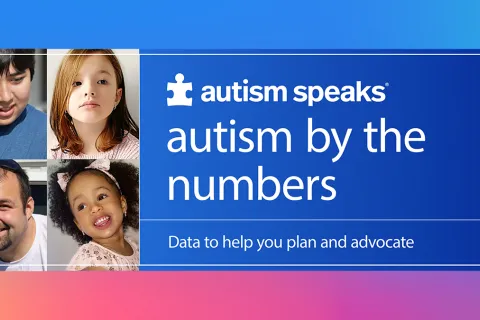Service dogs or therapy dogs for autism
How to decide between the two
By dog trainer Janet Cole, dog handler Betty Miller and developmental pediatrician Rolanda Maxim GottDog training experts Janet Cole and Betty Miller team up with developmental pediatrician Rolanda Maxim Gott to answer a question about choosing a service dog. Ms. Cole is the founder of CHAMP Assistance Dogs, in St. Louis, Missouri. Ms. Miller is nurse coordinator for the dog therapy clinic at the Knights of Columbus Developmental Center of SSM Cardinal Glennon Children's Hospital and Saint Louis University School of Medicine. Dr. Maxim is the developmental center’s medical director. The center, hospital and medical school are part of the Autism Speaks Autism Treatment Network.
We are looking into getting either a therapy dog or a service dog for our son who has autism. My respite-care provider believes he would benefit more from a therapy dog then a service dog. Can you advise? Any help or suggestions are appreciated.
Thank you for your excellent question. Before we discuss which kind of dog might be best for you child, please consider the following questions if you haven’t already:
- Does your child like dogs?
- Might your child or anyone else in the household have allergies that might be aggravated by a dog?
- Is your family prepared and ready to take on the long-term commitment and expense of caring for a dog in sickness and in health?
- Are you comfortable handling a dog while caring for your child in public? Even with a highly trained service dog, many parents have told us they were surprised how difficult this could be. Remember, the dog is looking to you (the adult) for direction and commands. At the same time, your child may need your full attention.
A service dog training agency – such as those listed on the Assistance Dogs International website – can help you sort through these questions.
Choosing a service dog, companion dog or therapy dog for your autistic child
You are correct to recognize a difference between a service dog and a therapy dog. We’d add a third category – a companion dog that’s well-behaved and well-trained. In fact, that’s what we usually recommend when a family comes to us for advice on choosing a dog for a child who has autism.
What to consider when deciding which type of dog is right for a child – or adult – who has autism:
Companion dogs
As mentioned, a well-trained family pet can be a wonderful calming influence for someone who has autism. An affectionate dog provides unconditional love and friendship on a daily basis. Walking the dog provides both exercise and a “social magnet” to ease conversation with other children. Learning to care for the dog teaches responsibility and practical skills. And pets provide parents with opportunities to teach and model caring behaviors and consideration of a friend’s needs – both important social skills.
If you’re considering purchasing or adopting a dog, we suggest golden retrievers, labs and labradoodles (lab-poodle mixes) because these breeds tend to have a calm temperament and high intelligence.
When it comes to adopting a rescue dog, we have one caveat. Many rescue dogs have unknown histories. That makes it difficult to predict how they will react when they feel frightened or threatened. Would the dog bite your child if he grabbed it roughly? Is it prone to chase cats? Attack other dogs? Some rescue dogs have been abused and so become fearful around certain people such as men.
Editor’s note: For a listing of local and national agencies and resources, also see the Autism Speaks Assistance Dog resource page.
Service dogs
Many service dogs receive extensive training and official certification to help perform functions that present a challenge for a person with a disability. However, the Americans with Disabilities Act (ADA) states that people with disabilities have the right to train the dog themselves and are not required to use a professional service dog training program. ADA also mandates that people can bring their service dogs in all public areas – including restaurants and stores. Service dogs typically wear a “cape,” or harness, that identifies them and lets bystanders know they are working and should not be disturbed.
Each service dog is trained according to the needs of the person it will assist. For instance, it may help someone with a mobility problem, visual or hearing impairment, epilepsy (alerting to seizures), diabetes (alerting to high or low blood sugar), an anxiety disorder or a developmental disorder such as autism.
An autism service dog, for example, can accompany a child to decrease anxiety during medical or dental visits, school activities, shopping and travel. Some autism service dogs are trained to recognize and gently interrupt self-harming behaviors or help de-escalate an emotional meltdown. For instance, it might respond to signs of anxiety or agitation with a calming action such as leaning against the child (or adult) or gently laying across his or her lap.
Parents have asked us about getting a service dog to safeguard their child from wandering. Generally, we do not recommend this. Tethering a dog to a child can be extremely dangerous. Like any animal, a service dog can panic under stress, resulting in tragedy for both the child and dog. While some agencies claim they can train dogs to stop children from leaving a home or yard, dogs are not appropriate babysitters. They can get fatigued and inattentive.
Finally, we want to emphasize that while many well-meaning people try to train dogs to perform service-dog duties, an improperly trained service dog can present a real hazard. That’s why we recommend working with an accredited dog agency. (See resources above.)
Therapy dogs
As their name suggests, therapy dogs are trained to provide affection and comfort in therapeutic situations. Typically, they work in hospitals, nursing homes and other healthcare and mental health facilities. They can assist with physical or occupational therapy, or simply help calm a patient undergoing a stressful medical procedure.
Outside of medical and institutional settings, therapy dogs have become popular in the autism community for their calming influence and ability to promote social interaction.
Many but not all therapy dogs have special training. (Many simply have an exceptionally calm, affectionate and tolerant nature.) When choosing a therapy dog, we recommend using an accredited agency such as one of those listed on the Assistance Dogs International website. In contacting a local agency, ask about their experience and training working with children or adults who have autism.
When therapy dogs work in a professional setting, they often wear an identifying cape. Some private owners likewise use an identifying cape or bandana. However, therapy dogs don’t have federally mandated access to public places.
Bottom line: Whether you get a companion dog, service dog or therapy dog, selecting the right animal means finding a highly individual “match” – with the child’s needs as well as the family. A local assistance dog agency may be able to help with this process. However, it’s a process that takes patience – with home visits and special training and waiting periods that can take up to 2 years from start to finish.
We hope this information on your canine options – and what each can offer a child with autism – will help guide your choice. Your goal is a very special connection between your child and the dog. When this happens, it is a magical thing!










